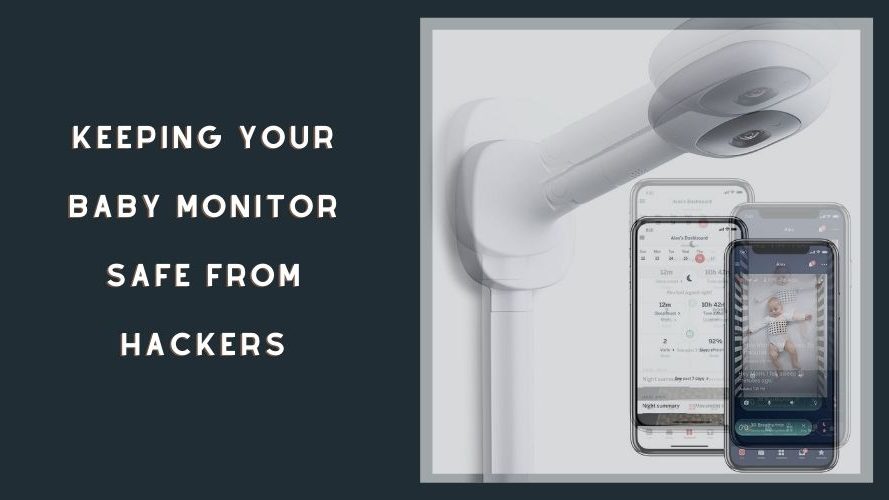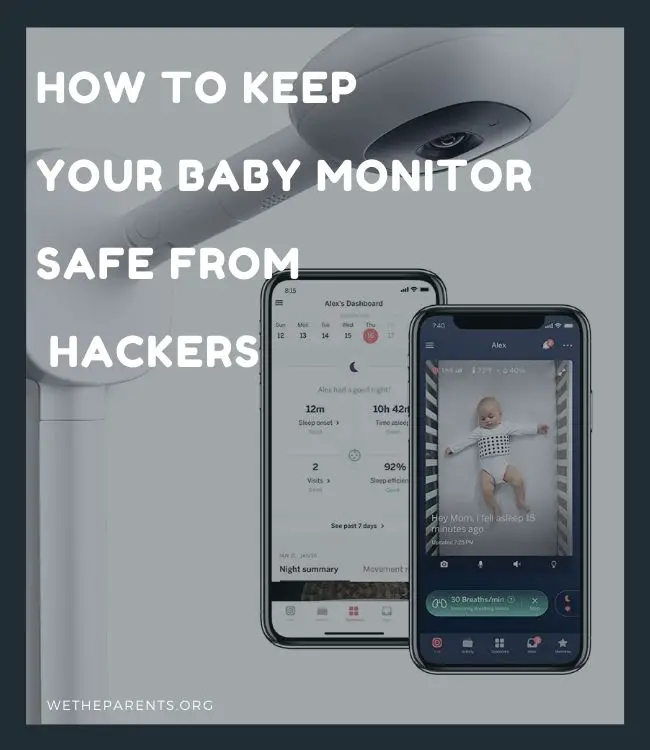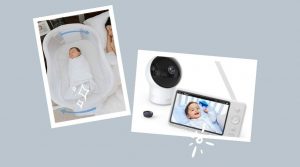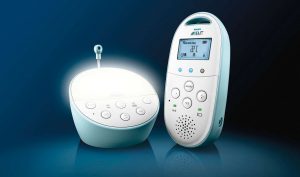Your baby monitor is a tool that’s meant to bring you peace of mind by allowing you to quickly and easily check in on your baby from a distance. Although moms may have eyes in the back of their heads, they sure don’t have x-ray vision to peep in on the nursery!
As technology provides more ways of making family life easier, the invasion of unwanted hackers has become an unfortunate reality.
While many of today’s baby monitors are packed with features designed to keep strangers at bay, understanding them is an essential part of using a monitor safely.
How to pick a safe baby monitor?
There are lots of options out there to choose from, and some baby monitors can be pricey — especially if you’re looking for one that’s super secure.
So it’s wise to know what features you’re looking for, the meaning of some common terms, plus any other issues associated with baby monitors.
- Choose a baby monitor with an encrypted connection: Encryption is a complex word which describes a fairly simple action. When your connection is encrypted, it means that all the footage from your baby monitor video is filtered and altered into random data, enabling only authorized users to see what’s happening. This offers a deeper level of security than password protection alone, which would become ineffective in a large-scale data breach.
- Understand Internet security basics: Gaining a better concept of Internet security concepts like encryption, password protection, home Wi-Fi network security, and malware plays an important part in choosing a safe baby monitor and protecting existing connections from being tampered with. As a basic rule of thumb, this means understanding how to choose appropriately complex passwords, securing your Internet connection and devices through the use of a wireless router and password, and avoiding suspicious websites or emails from people you don’t know. It also means being sure to change any device’s default username and password, even your home router, while avoiding the use of identifying details in your network name.
- Research the product you’re buying: No matter how much you love what a brand has to say about their product in an advertisement, remember that they’re ‘targetting’ you. Take a look at what other brands have to say, especially if reviews are available from other parents. This will bring your attention to any possible security issues, hotfixes, or past problems associated with a device, bringing you up to date with how it will actually perform.
- Make sure to register: If you’re one of the many people for whom product registration forms wind up in the bottom of the wastebasket, or shoved into a drawer somewhere in your home, we implore you to think twice. When you register your baby monitor, chances are you’ll be contacted directly with any updates or problem issues with the device.
What should I consider before buying a baby monitor?
While preparing to make your purchase, here are a few factors worth considering.
- The features it has vs. the ones you’ll use: Baby monitors can come with a staggering array of features, like video live-streams, home temperature and heartbeat monitors, a set of pre-recorded lullabies, Wi-Fi and cellular network connectivity enabling you to see and hear your child from longer distances, and even activity logs that track the way your baby sleeps. Of course, you won’t access all these features on a regular basis, so consider which ones are the most relevant to you.
- Price point: While regular baby monitors are fairly affordable, smart baby monitors offering Internet access through home networks and boasting a wide range of security features can prove far more costly. It’s safe to say the cost runs the gamut, so don’t be too afraid to register for that smart device, or give family members a heads up.
- Technical complexity: With a host of new tech-centric safety features, the use of infant monitors can be more technically complex than one might expect. If your family (or at least one parent) is comfortable with the world of basic Internet security and network technology, you could feel perfectly at home with everything without a struggle. If you’re not comfortable with technology, why not opt for a baby monitor with a reputation for convenience and user-friendly interface.
Safe baby monitor usage tips
Once you’ve chosen what’s right for keeping your child safe, learning how to use the device properly, while avoiding common hazards, is the best safety measure of all. Follow these basic security tips to reduce the likelihood of baby monitor hacking.
- Reboot your baby monitors and security systems on a regular basis: About once a week, it’s recommended to completely reboot any security camera, baby monitor, router, and other security devices that connect to the Internet in your home. This is because, as cameras, baby monitors, and other devices reboot, they’ll automatically seek out information about any updates or patches that have been released recently. This will help to keep devices running efficiently and put an end to potential vulnerabilities. Scheduling a simple weekly reboot is a great way to save you from having to think about these updates.
- Choose an email that’s just for your baby monitor: In the unfortunate event of a security breach, things can become more complex if the email account you’re using for your monitor is also tied to your credit cards, bills, and mortgage. To protect your vulnerable information, it’s wise to make an email address exclusively for your monitor. The good news is that Gmail allows you to sync delivery with an existing account so that, once the account is made and set up, you can basically forget about it.
- Choose strong passwords for your Wi-Fi router and baby monitor: Always change the default password of both your baby monitor and your Wi-Fi router, as a complex password helps to keep your network secure. It doesn’t have to be a string of random characters, but try to pick disparate words, numbers, and symbols for a Wi-Fi password rather than using a sentence, name, or other familiar set of words — the best choice is something the kids can remember, but hard for a stranger to guess.
- Set up a Google alert for the make and model: No parents have the time or desire to spend each day searching after their baby monitor online just to make sure no issues have been announced, though, thankfully, Google is willing to save you the trouble. Your best bet is to set up a Google alert for your device’s make and model, and if any important updates or vulnerabilities come to light, you’ll find out about them pronto in your inbox — and typically, no news is good news.
- Understand what your device can do: Some modern baby monitors are packed with security features, but keep in mind that if you don’t read up on exactly what they are, you might miss out on utilizing some of the most valuable ones. These can include things like two-factor authentication, which adds an extra layer of protection that must be bypassed in order to access your device.
- Update the baby monitor’s software or firmware whenever required: If you receive a notification that your router or baby monitor’s software or firmware is in need of an update, it’s important that you do so as soon as possible. If you are rebooting all your security devices weekly, as suggested above, this process may happen automatically before you are aware an update is available. However, if notified of an update between reboots, or if you don’t reboot regularly but see that new software or firmware is available, it’s advised that you act immediately. These updates both streamline device function and tackle security vulnerabilities, so you could regret ignoring them.
- Don’t allow remote access if it isn’t needed: If you don’t actually need remote access to your baby monitor, simply turning remote access to the cameras off mitigates a great deal of the risk associated with keeping your baby monitor connected to the Internet. You can always turn it back on when needed.
How do I know if my baby monitor has been hacked?
The fear of your child monitor being hacked is something we all understand; even worse is that it may not be immediately obvious that it’s happening.
Small changes and unusual noises are key signs that something’s amiss; so if you’re suspicious, read on to learn more.
Watch for changes
Know where your baby monitor camera is focused so you can notice if anything unusual happens, ie., the camera moving without your input.
It’s best to ask your partner and older kids to let you know if they change the baby monitor’s camera position so you can be sure any changes are being made from within household access.
Opt for audio alerts
One feature of smart baby monitors that parents love is the option to choose what type of alert they receive when their child cries. Alerts that are solely visual aren’t so great.
This is because disabling the audio from your child’s room will prevent you from hearing the unusual audio that’s often linked with access from a hacker.
Unusual audio
If you’re hearing sounds, voices, or music through your baby monitor that you know aren’t being produced in your home, it can be a sign that your baby monitor has been hacked. If a suspicious incident occurs, it’s best to note the date, time, and what occurred.
The bottom line
While the idea of hackers accessing your video baby monitor is understandably frightening, it doesn’t happen often.
Daniel Eliot of the National Cyber Security Alliance remarks that, while it’s important to limit opportunities for hackers to operate, the problem is not a particularly common one, and some news reports may make parents more fearful of this possibility than necessary.
Taking precautions to eliminate security risks within your home network, and choosing a monitor that’s well-reviewed for safety features, can go a long way to reduce the likelihood of hacking.
The best thing you can do to stay safe is to follow basic protocol — securing both your wireless network and your video monitor with a complex password helps make hacking more difficult for intruders, while regularly rebooting devices to trigger the installation of software updates will ensure that the latest and most secure technology is present on your monitor.





